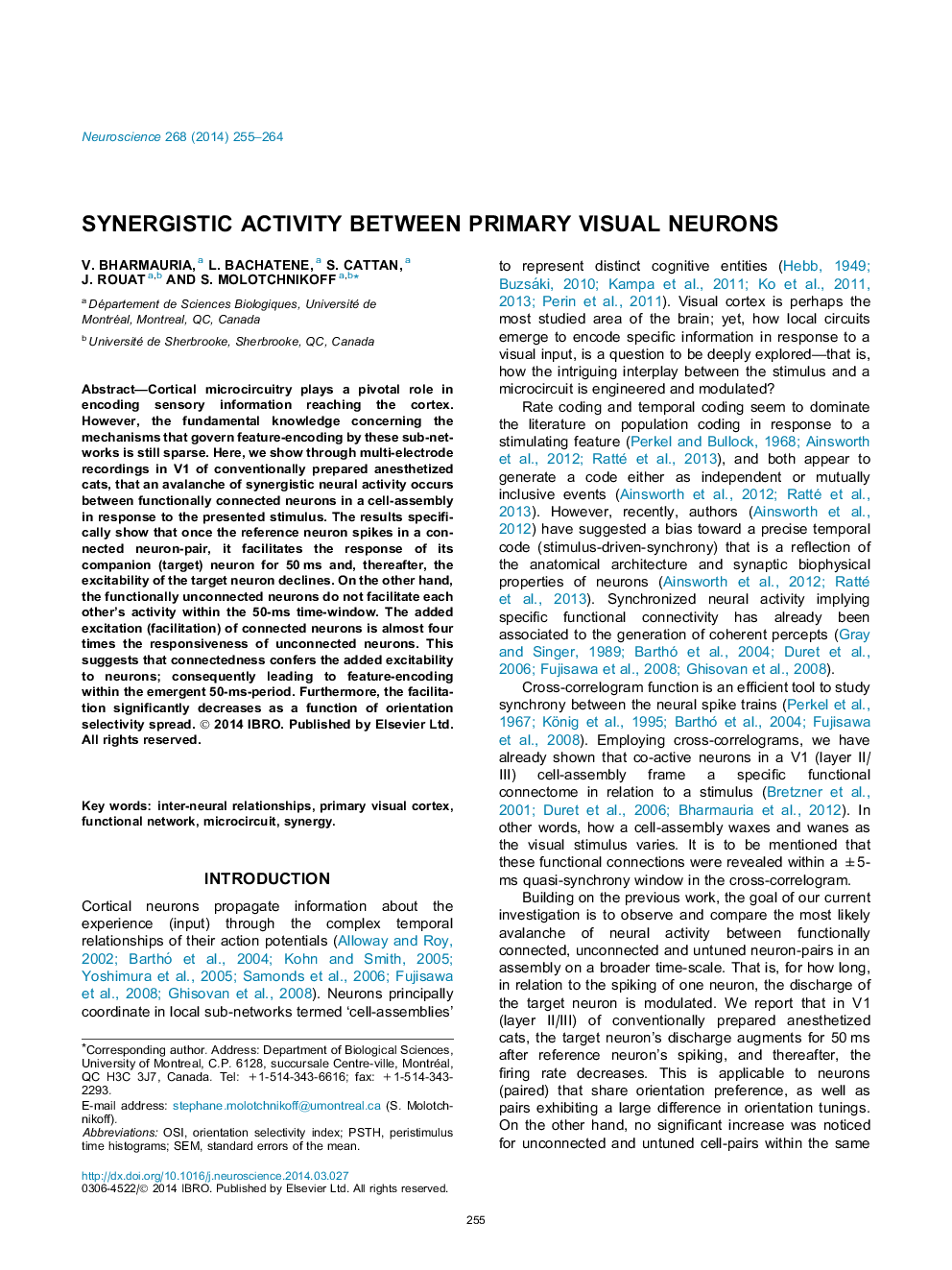| Article ID | Journal | Published Year | Pages | File Type |
|---|---|---|---|---|
| 4337720 | Neuroscience | 2014 | 10 Pages |
•Functionally connected neurons exhibit heightened excitability between them.•The increased excitation for connected cells is four times that for the unconnected cells.•The augmented excitation lasts about 50 ms.•The 50-ms epoch creates a ‘window of opportunity’ for neural encoding.•Excitation is more between closely tuned neurons.
Cortical microcircuitry plays a pivotal role in encoding sensory information reaching the cortex. However, the fundamental knowledge concerning the mechanisms that govern feature-encoding by these sub-networks is still sparse. Here, we show through multi-electrode recordings in V1 of conventionally prepared anesthetized cats, that an avalanche of synergistic neural activity occurs between functionally connected neurons in a cell-assembly in response to the presented stimulus. The results specifically show that once the reference neuron spikes in a connected neuron-pair, it facilitates the response of its companion (target) neuron for 50 ms and, thereafter, the excitability of the target neuron declines. On the other hand, the functionally unconnected neurons do not facilitate each other’s activity within the 50-ms time-window. The added excitation (facilitation) of connected neurons is almost four times the responsiveness of unconnected neurons. This suggests that connectedness confers the added excitability to neurons; consequently leading to feature-encoding within the emergent 50-ms-period. Furthermore, the facilitation significantly decreases as a function of orientation selectivity spread.
Graphical abstract.Figure optionsDownload full-size imageDownload high-quality image (54 K)Download as PowerPoint slide
